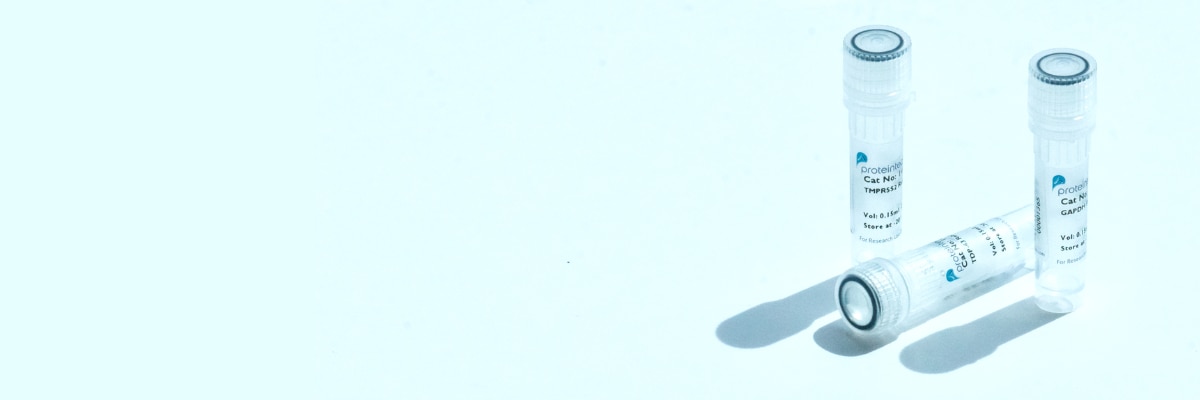Western Blot Troubleshooting: Weak/No Signal & Other
Troubleshooting tips and solutions for weak or no signal in Western blot.
Jump to:
- Western Blot Protocol
- How To Optimize Your Western Blot
- SDS-PAGE Gel Recipes
- How To Optimize Your Results With Low MW Proteins
- Tricine Gel Recipe For Low Molecular Weight Proteins
- Choosing The Right Lysis Buffer
- Choosing The Right Western Blot Detection Method
- Western Blot Troubleshooting: Why Does The Observed Protein Molecular Weight (MW) Differ From The Calculated One?
- Western Blot Troubleshooting: High Background
- Western Blot Troubleshooting: Weak/No Signal & Other
- Western Blot ppt
- Western Blot Video Protocol
Overcome your Western blot difficulties with our troubleshooting advice, covering problems such as weak/no signal, non-specific bands, high signal, and other common issues.

Proteintech control antibodies are $189 each for a 150ul size vial
View all Loading Control AntibodiesIssues with the primary and / or secondary antibody
-
Titrate the antibody to determine optimum concentration.
-
The antibody may have lost activity – perform a dot blot to determine activity and optimal concentration.
-
Include a positive control (e.g., overexpressed protein, purified protein, positive cell line, etc. Adjust protein loading accordingly).
-
Change incubation time and temperature (4°C, overnight).
Target protein abundance is too low
-
Load more protein per well.
-
Enrich low-abundance proteins by immunoprecipitation, fractionation, etc.
-
Use appropriate treatment to induce target protein expression or modification.
-
Ensure sample has not degraded.
-
Include protease inhibitors in the lysis buffer.
-
Use the optimum lysis buffer for the target protein’s subcellular localization.
-
Check protein loading with an internal loading control antibody.
Membrane choice
Select PVDF or NC membranes based on hydrophobicity/ hydrophilicity of the target antigen.
-
Check the hydrophobicity/hydrophilicity of the antigen sequence.
-
PVDF membrane works better with hydrophilic/ polar/charged target antigens.
-
Nitrocellulose works better with hydrophobic/ non-polar antigens.
Blocking buffer issues
-
Blocking for too long can mask specific epitopes and prevent antibody binding.
-
Reduce the percentage of, or remove, the blocking reagent from the antibody incubation buffers.
-
Switch to using an alternative blocking reagent.
Low molecular weight targets
-
Use a Tris-tricine gel for protein targets <20kDa.
-
Reduce transfer times and/or use smaller pore size membranes (0.22 μm) for low MW proteins <30kDa.
-
Wet transfer is recommended for small proteins (10kDa).
Unsuccessful transfer
-
Ensure proper transfer set-up (e.g., no air bubbles trapped between the gel and the membrane).
-
Thicker gels can result in incomplete transfer of high molecular-weight-proteins.
-
Check the quality of protein transfer with a reversible, universal protein stain, e.g., Ponceau-S.
-
Wet transfer produces higher-resolution transfers over semidry transfer.
Sodium azide contamination
-
The presence of sodium azide inhibits the activity of HRP.
-
Use sodium azide-free buffers.
-
Ensure sufficient washing.
Film exposure too short / detection reagent not sensitive enough
-
Check several exposure times to achieve optimum detection.
-
Try different detection reagent compositions and/or brands.
-
Dilute chemiluminescent reagents in high-purity water.
Other blotting issues
Ghost hollow bands
- This happens when the ECL substrate is used up too rapidly.
Sample overloading
- Decrease the total protein loading for each sample.
Too much antibody
- Decrease the concentrations of the primary and/or secondary antibodies.
Inverse staining (i.e., white bands on a dark blot)
-
Too much primary and/or too much secondary antibody.
-
Use antibodies at higher dilutions.
Molecular weight marker staining
-
The antibody reacts with the MW marker.
- Add a blank lane between the MW marker and the first sample lane.
“Smiling” bands
-
Migration through the gel was too hot or too fast.
-
Reduce the voltage applied to run the SDS-PAGE gel or run the gel in a cold room.
Blank areas/white spots
- Can be caused by improper/uneven transfer or air bubbles.
Uneven bands
-
High protein concentrations can result in diffuse protein bands.
-
Uneven protein loading: assay protein samples and load by protein amount. Check for even protein loading by stripping and reprobing the blot with an internal control antibody (or use an HRP-conjugated loading control antibody).
-
Uneven gel composition (gel has set too quickly while casting or buffer was mixed inadequately).
-
Uneven bands can be due to insufficient buffer being added to the tank during running.
Dark spots/dots
-
This problem can be caused by antibodies binding to the blocking reagent in the blocking buffer.
-
Change to another blocking reagent.
-
Filter the blocking buffer.
-
Wash excess detection reagent from the membrane before exposure.